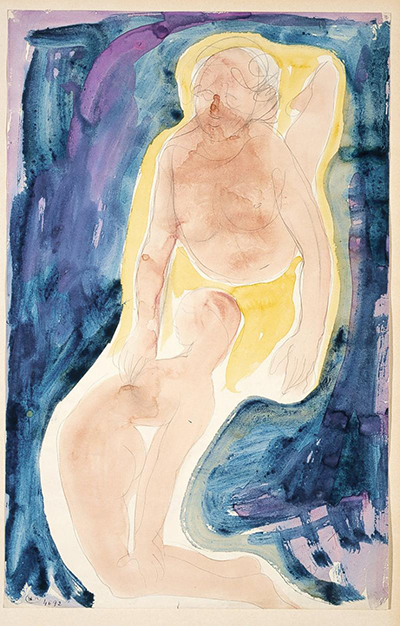The Resurrection was painted by Auguste Rodin, in 1900. Known as one the most influential and talented sculptor, Rodin was also a skilled etcher and made a numerous paintings and drawings.
Expressive body language features heavily in his work throughout his career and across all art forms Rodin used. When Rodin began his career, art commonly told stories of the past as if the artist were a witness to the events. Rodin is credited with changing art, and specifically sculptures into what we consider modern by today's terms, communicating to a viewer's imagination and emotions.
When Rodin died in 1917, he had produced a huge volume of work and displayed remarkable talent. His pioneering work is widely recognised as providing a vital link between traditional and modern art. Rodin created over 10,000 drawing, with over 7,000 being held in the Musée Rodin, Paris. Although they can only be shown periodically because of their fragility. Rodin’s drawings are rarely used as projects or studies, but their importance should not be overlooked. Developed in tandem with his sculptures, Rodin himself described them as key to all his work.
In parallel to his sculptures, Rodin created drawings that experimented with combinations of figures. This striking piece merges two cut-out figures, likely traced from two unconnected drawings. As has been the case in the past, these figures were then combined to create a new piece of work. Rodin then added colour to the drawings to bring the two figures to life. He used broad strokes and a brush thick with purple gouache, blue and green. The two women stand out, illuminated in a yellow, halo-like glow against the dark background.
As if an angel. One woman appears to bring the other back to life, touching her with her right hand drawing out the darkness bringing her back into the light. Rodin later named the drawing Resurrection, confirming this understanding of the piece. However, his primary concern lay elsewhere, a permanent characteristic of Rodin work, form is of higher importance than the subject, and the expressive strength of the drawing sufficed on its own.




